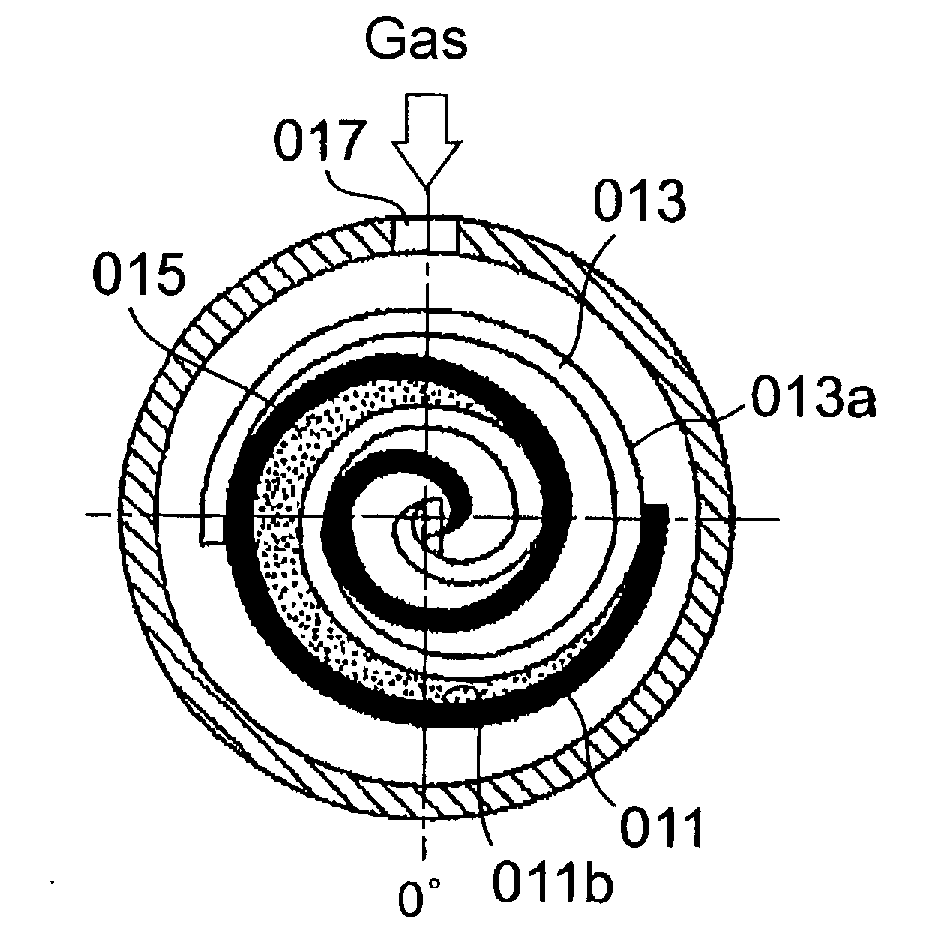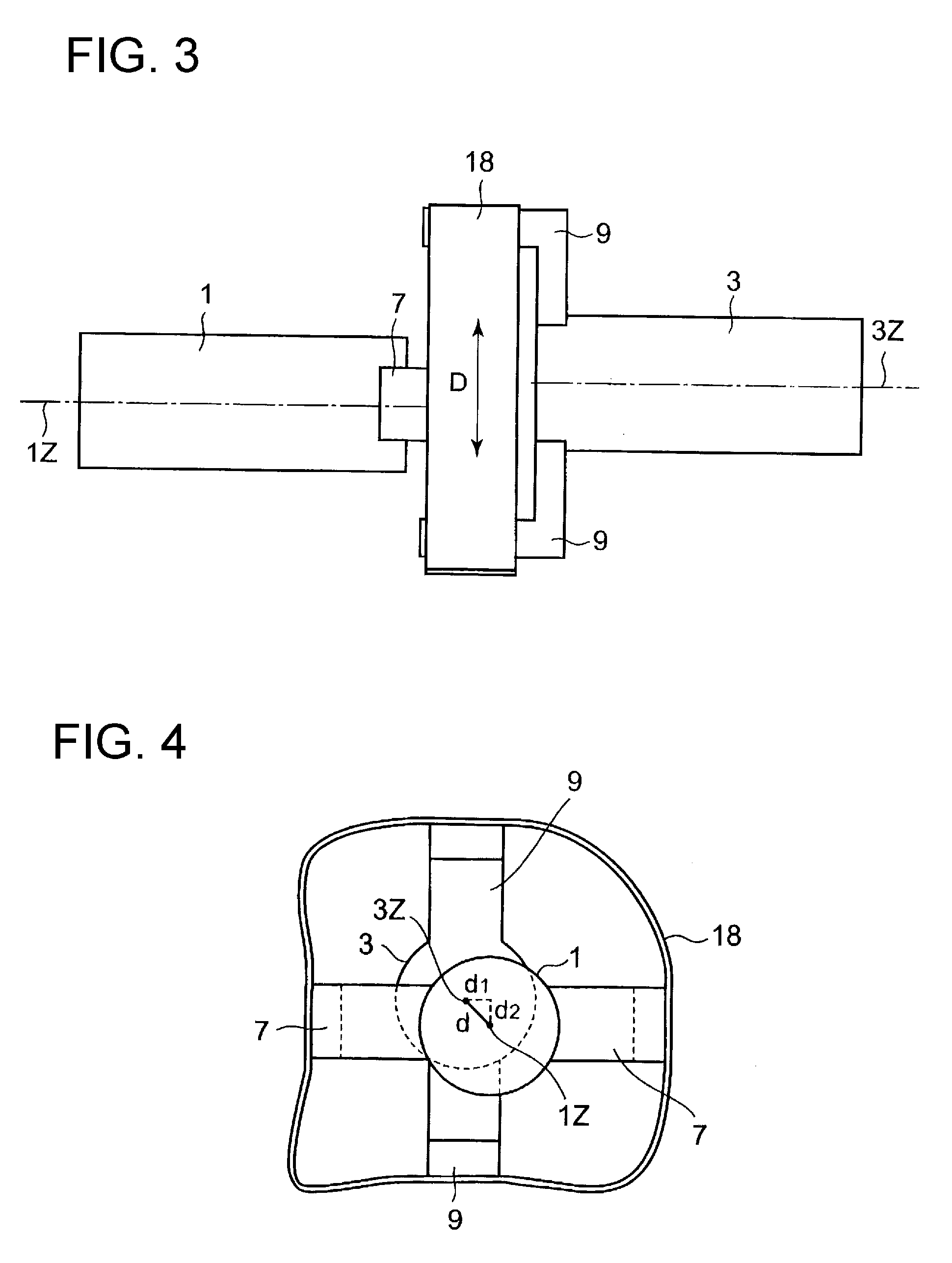Scroll fluid machine
a fluid machine and scroll technology, applied in machines/engines, couplings, liquid fuel engines, etc., can solve the problems of increasing manufacturing costs, increasing clearance, and producing vibration and noise, so as to prevent the occurrence of torsion of the first scroll relative to the second scroll
- Summary
- Abstract
- Description
- Claims
- Application Information
AI Technical Summary
Benefits of technology
Problems solved by technology
Method used
Image
Examples
first embodiment
[0060]the scroll fluid machine utilizing the shaft coupling mechanism mentioned above will be explained referring to FIGS. 5 and 6.
[0061]Referring to FIG. 5, a scroll compressor 50 comprises a revolving scroll 52 having a revolving scroll lap 54, a stationary scroll 58 having a stationary scroll lap 58, a scroll casing 60 fixed to the stationary scroll 58 and covering the revolving scroll 52, a motor casing 64 of a motor 62 for driving the revolving scroll 52.
[0062]A discharge port 68 and a discharge opening 70 communicating to the discharge port 68 are provided to the stationary scroll 58 at the center of the stationary scroll plate of which the inside surface is finished to a mirror surface 58a. The stationary scroll lap 56 erects from the mirror surface 58a extending spirally outward from near the periphery of the discharge port 68. A tip seal (not shown) made of self-lubricating material is received in a tip seal groove (not shown) of the stationary scroll lap 56.
[0063]The stati...
PUM
 Login to View More
Login to View More Abstract
Description
Claims
Application Information
 Login to View More
Login to View More - R&D
- Intellectual Property
- Life Sciences
- Materials
- Tech Scout
- Unparalleled Data Quality
- Higher Quality Content
- 60% Fewer Hallucinations
Browse by: Latest US Patents, China's latest patents, Technical Efficacy Thesaurus, Application Domain, Technology Topic, Popular Technical Reports.
© 2025 PatSnap. All rights reserved.Legal|Privacy policy|Modern Slavery Act Transparency Statement|Sitemap|About US| Contact US: help@patsnap.com



